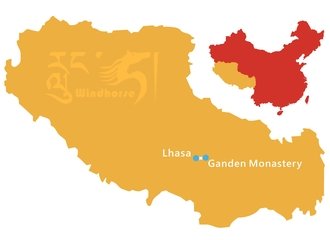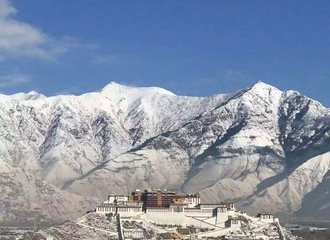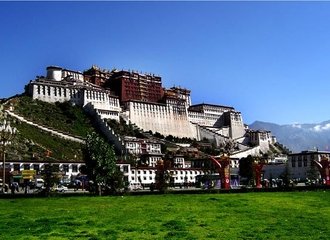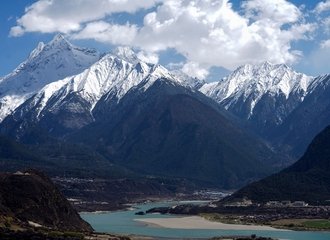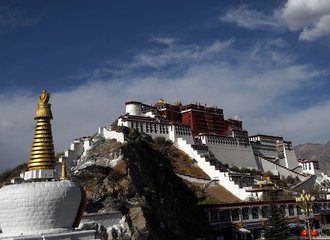What are the conditions on trains to Tibet?
A very common question is: What are the conditions on trains to Tibet? Well, in short, the answer is that the train conditions are basic but satisfying. You can find more information about train conditions below.
About the Tibet Train
Tibet trains, also known as the Qinghai-Tibet Railway, are the highest railways in the world, with the highest point at Tanggula Pass reaching an altitude of 5,072 meters (16,640 feet) above sea level. It is also the most popular and convenient way to travel from Mainland China to Tibet. Although it's the slowest option, it is worth it. The train journey takes you through amazing landscapes that you can only fully appreciate when traveling by train.
This railway connects many cities in China to Lhasa in Tibet. You can board the train from Beijing, Shanghai, Chengdu, Chongqing, Xining, Guangzhou, Xi’an, Lanzhou, Hong Kong, Golmud, Nagchu, and Xining.
Types of Berths
On the Tibet train, you can choose between three main types of berths.
- Soft Sleeper berths are the most comfortable and popular among tourists. These berths have four beds in each cabin, along with locking doors, reading lights, and windows. While these berths aren't luxurious—even the more expensive options are basic—they provide ample space and clean bedding. Typically, there are two sleeping cars on each train, with 88 sleeping beds in total.
- Hard Sleeper berths are more economical yet still comfortable. Each cabin accommodates six beds, though without doors. In a car, there are 11 hard sleeper berth compartments, resulting in a total of 550 hard sleeper beds on the Tibet train.
- Hard seats are generally preferred by locals and those traveling shorter distances.
Meals on the Trains to Tibet
On the Tibet train, passengers can choose between Chinese and Tibetan cuisine. There are three meals provided each day, and the meals are relatively simple.
For breakfast, the usual offerings include milk, eggs, bread, and noodles. For lunch and dinner, passengers have two options: Set Meals, which are predetermined meal combinations with a variety of dishes, or À la Carte service, where you can choose individual dishes based on your preferences. Snacks like potato chips, noodles, fruits, and soft drinks are available for purchase on the train.
During meal times, hot box meals are also offered on the trolley. It's worth noting that food on the train is generally more expensive than in other places in China. If you prefer, you can bring your own food from outside.
Toilets on the Tibet Train
Each cabin on the train is equipped with toilets. There are two types available: Asian-style and Western-style. Additionally, there is a shared toilet on the train. While the toilets are usually clean, they do not provide toiletries or toilet paper, so we recommend bringing your own.
Oxygen Supplies
The train features a central oxygen system that is activated when the train reaches high altitudes. In cases where passengers experience symptoms of altitude sickness, personal oxygen supplies are available. It's important to note that instances of high altitude sickness on the Tibet train are rare.
Luggage and Storage on Tibet Trains
Passengers are allowed to bring luggage on the train, but it should be within a reasonable weight limit. An adult traveler is permitted to carry luggage weighing less than 20kg (44 pounds). However, bringing excessive or bulky luggage could pose a challenge due to limited space in the compartments. If you have a smaller bag, you can store it on the overhead shelves in the compartments. Given the confined space, we recommend bringing only essential baggage for your journey on the Tibet train.
Every passenger is responsible for their own luggage. If you have a suitcase with a lock, it will provide an additional level of security.
If your luggage exceeds the compartment's storage capacity, you may need to utilize the under-bed storage provided in other train cars.
For added security, ensure that valuable travel documents, passports, money, and electronic devices are kept close to you.
Emergency Procedures and Preparedness on Tibet Trains
Tibet trains are generally safe, with a strong emphasis on passenger safety through various measures. While onboard, pay close attention to announcements and follow instructions from train staff in case of emergencies. Emergency exits and evacuation routes are available, so take note of their locations within your compartment.
Each train is equipped with a doctor to address medical emergencies such as altitude sickness or other health issues. Basic first aid kits are also available in Tibet train compartments. If needed, you can ask train staff for their locations and how to use them.
Language and Communication
Be prepared for potential language barriers, as most train employees primarily speak Chinese. However, if you're traveling with a guide, language won't be an issue. Local travel guides typically have a strong command of English.
Conclusion
If you choose to embark on a train journey, brace yourself for a long yet thrilling experience. The landscapes you'll witness along the way will be unforgettable, and such beauty can only truly be appreciated from a train.
Tibet train conditions are basic, but they provide everything necessary for your comfort. The trains are safe, and emergencies are relatively rare. Given the high altitude, remain attentive to your health, listen to your body, and don't hesitate to seek medical assistance from the onboard doctor if needed.
Wishing you a safe journey filled with enjoyment!


